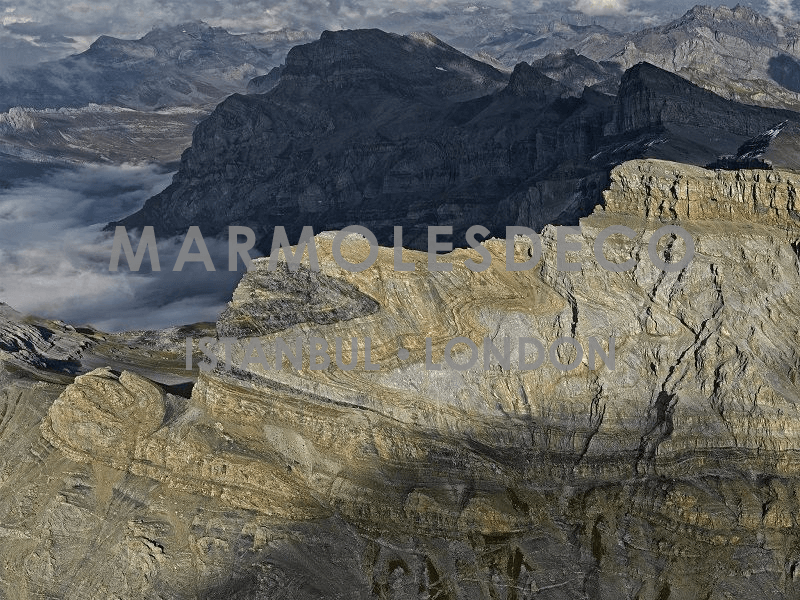Marbles in the Alpine Orogeny
Marble, a metamorphic rock prized for its natural beauty and versatility, occurs in various colors and patterns worldwide. In alpine regions, particularly the European Alps, marble deposits are abundant, showcasing a stunning array of colors. This essay explores the captivating spectrum of marble colors found in the alpine landscapes, shedding light on the geological factors and human uses that make these stones so remarkable.
Geological Origins:
The diverse colors of marble in alpine regions can be attributed to a combination of geological factors. The primary precursor to marble is limestone, a sedimentary rock primarily composed of calcium carbonate (CaCO3). The formation of marble begins with the metamorphism of limestone, a process that involves intense heat and pressure. During this transformation, impurities, such as minerals and organic matter, can infiltrate the limestone, imparting a wide range of colors and veining patterns.
Common Marble Colors in Alpine Regions:
White Marble:
Alpine white marble is perhaps the most renowned of all. It is prized for its purity and crystalline appearance. Carrara marble, extracted from the Carrara quarries in Italy, is a famous example of alpine white marble. Its timeless elegance has made it a favorite among sculptors and architects for centuries.
Grey Marble:
Grey marble from alpine regions often features subtle variations in shade, making it a popular choice for contemporary interior design. The grey tones are a result of various minerals and impurities, including graphite, serpentine, and hematite, present during the metamorphic process. Grigio Carnico marble is the most famous one of these grey marble in Alpines.
Pink and Red Marble:
The presence of iron oxides in limestone gives rise to pink and red hues in alpine marble. These stones can range from delicate pinks to deep, rich reds. Notable examples include the Adnet Red Marble from Austria and the Rojo Alicante marble from Spain.
Green Marble:
Green marble in alpine regions derives its color from the presence of minerals like chlorite and serpentine. These marbles can exhibit a wide range of green shades, from pale to emerald. The iconic Verde Alpi marble from Italy is a prime example of green alpine marble.
Black Marble:
Black marble is rare but can be found in alpine regions. It owes its color to the inclusion of graphite or other carbonaceous materials. Black marbles like Nero Marquina from Spain and Black Belgian Marble are highly prized for their dramatic appearance.
Uses and Significance:
The stunning array of marble colors found in alpine regions has led to their extensive use in various industries and applications:
-
Architecture and Sculpture:
Alpine marbles have been used for centuries in iconic architectural landmarks, sculptures, and monuments worldwide. Their aesthetic appeal and durability make them ideal for these purposes. -
Interior Design:
Marble's luxurious appearance and versatility make it a popular choice for interior design, including countertops, flooring, and wall cladding. -
Jewelry and Decorative Items:
High-quality marble is often used to create exquisite jewelry and decorative items, showcasing the natural beauty of the stone.
The alpine regions offer a breathtaking kaleidoscope of marble colors, each reflecting a unique geological history. From pristine white to deep black, and everything in between, these marbles have left an indelible mark on art, architecture, and design. As we continue to appreciate and utilize these beautiful stones, we must also acknowledge the geological processes that have shaped them over millennia, making them an enduring symbol of nature's artistry.







 Online Catalog
Online Catalog